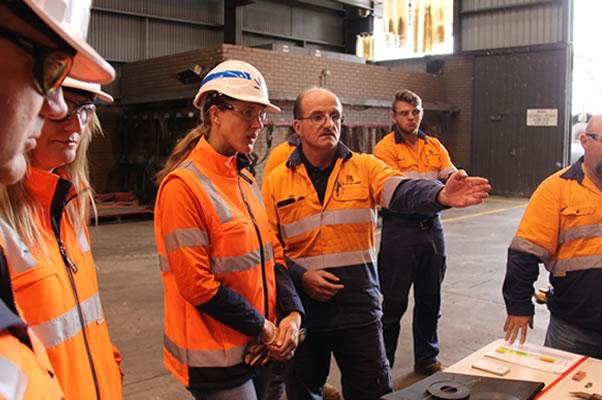Splice without a Knife
Article published by AGL
Can you do a splice without a knife? That was the question put to Belle Banne employees at Loy Yang following a spate of knife-related injuries within parent company Fenner Dunlop.
A Belle Banne workgroup at Loy Yang came up with innovative solutions, eliminating the use of all blades when working on conveyers, revolutionising the industry.

Belle Banne Conveyor Services, Site Manager, Glenn Nijenhuis said a comprehensive review of work practices was undertaken following a knife-injury on site at Loy Yang.
Glenn said improvements to PPE, specific risk assessments and changes to body positioning when using knives, just didn’t seem to go far enough.
“The driver was people are getting hurt with knives and the best way to stop people getting hurt with knives is to stop using them altogether,” he said.
“Initially our people thought we can’t do that, this is the way it has been done for 30 years. For a belt splicer the knife was the go-to tool, like a calculator is to an accountant.
“We got our people on the shopfloor involved in the process, shared the problem and challenged them to come up with a solution.
We identified ten different steps in doing a splice that involved a knife. We worked through them systematically. Once we executed one successfully, we moved onto the next. Finally, we completed our first splice in the field without a knife.”
All knives have been eliminated from the splicing process, including Stanley and Olfa knives and replaced with various other tools including a multifunction tool, known as ‘The Renovator”.
A grooving gun traditionally used to groove pulleys and tyres replaces the hook knife. Piano wires also replace hook knives and industrial snips are used in place of various other types of knives.
The new processes have been trialled for a couple of months now, with great success.
“We do 50-80 belt splices a year on site at Loy Yang and about 25,000 man-hours on belt repairs. By eliminating the use of knives we’ve eliminated the risk of knife-related injuries on these tasks,” Glenn Nijenhuis, Belle Banne said.
Glenn said that the number of people required to undertake the tasks has not changed and tasks are completed within the same timeframe.
“We’ve eliminated the risk of cutting and there are additional benefits including reduced wear and tear on joints in the hands as well as injury to knees and shoulders associated with the old work practice.”
.embed-container { position: relative; padding-bottom: 56.25%; height: 0; overflow: hidden; max-width: 100%; } .embed-container iframe, .embed-container object, .embed-container embed { position: absolute; top: 0; left: 0; width: 100%; height: 100%; }